
by Kathryn Brenne

This breezy Techno-Plaid Summer Dress was a surprising success! Since I don't work with poly very often, I was wary about working with this semi-sheer polyester fabric (available in three colorways: EOS fabric #46305, and also #47757 and #47760), fearing that it might be too hot to wear on my recent Florida vacation. The print is fabulous, and I was motivated to find a summery dress pattern that was loose and airy. I decided on Vogue 1379 which was perfect for this project, and even in the hot, humid 80° Florida weather, the dress was breezy and comfortable!
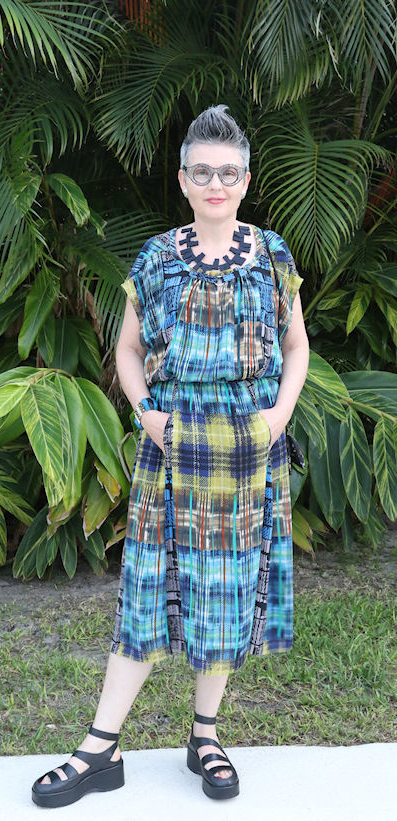
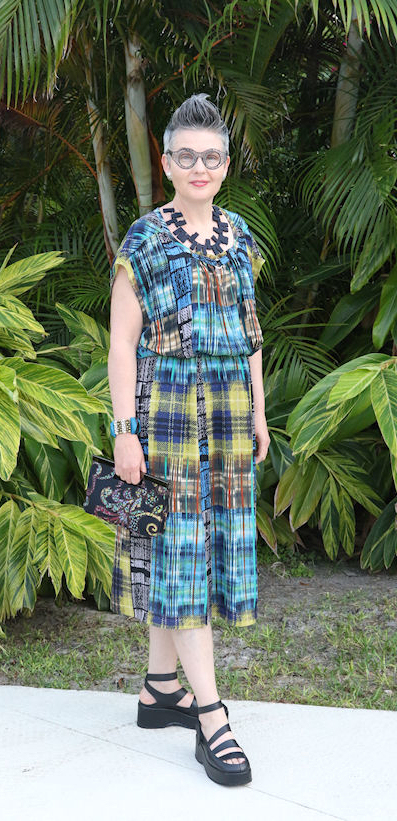
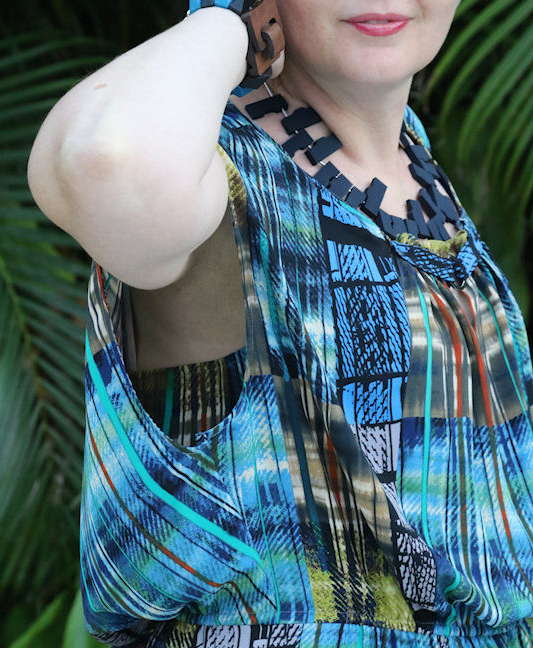
Vogue patterns are known for their attention to detail and this pattern did not disappoint!
With its hidden front pockets and built in camisole, the finishing instructions were lengthy but well worth the time invested.
When purchasing a print fabric, you will want to purchase an extra repeat, which will allow you to match pattern pieces horizontally. The repeat on this fabric was quite large. I decided to match the pattern horizontally but not worry too much about matching it vertically as the fabric is very colorful and there are several pattern pieces. I did, however, decide that I wanted more of the blue color closer to my face.
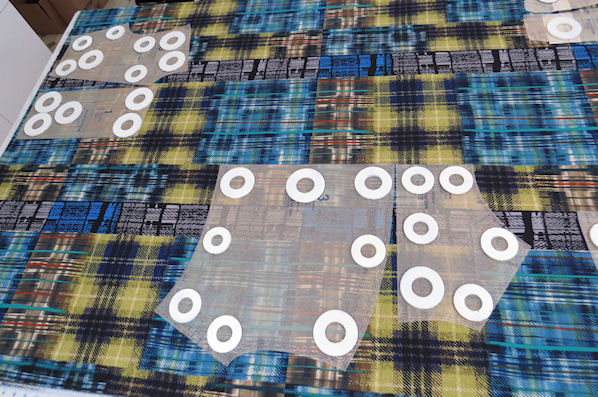
I cut the pattern out as a single layer, which allowed me to match the pattern perfectly.
Pieces were laid out matching the horizontal pattern repeats of the fabric. I used weights to hold the pattern pieces in place and cut with a sharp rotary cutter. You will find that a rotary cutting blade dulls quickly when used on polyester fabric. Begin with a new blade for best results. Once the initial pieces were cut I flipped them over, matched the fabric and cut the remaining pieces.
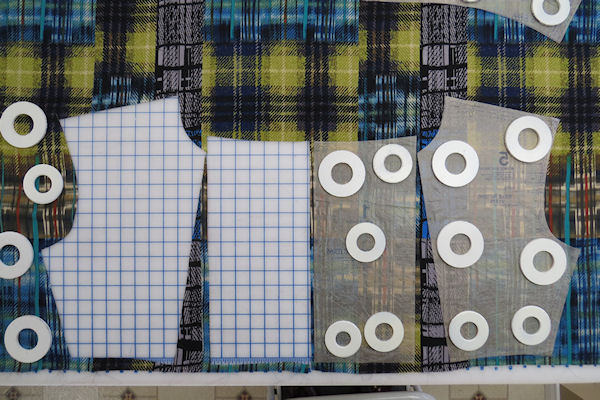
All of the seams on the garment are finished with French Seams. For a refresher on French Seams take a look at this tutorial. The edge of the lower back is finished with a baby narrow hem.
The ruffled seam is a nice detail on the back of the garment. It is gathered and then top stitched to the yoke. Use plenty of pins to hold the gathers in place as the polyester fabric can be slippery to handle without them.
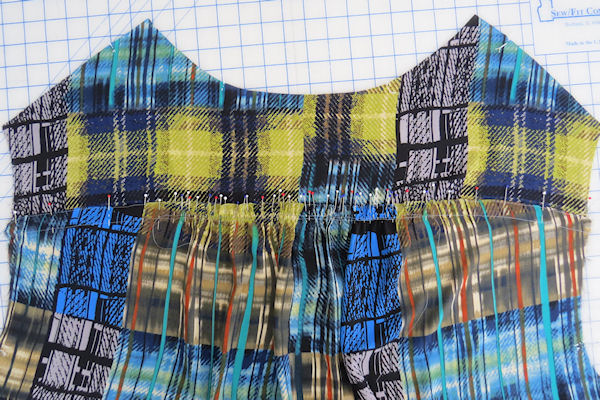
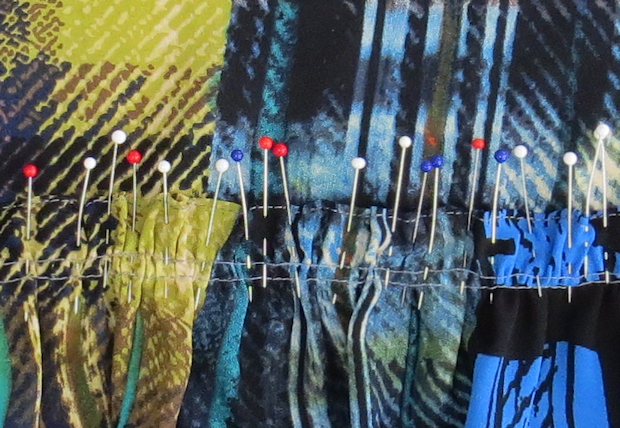
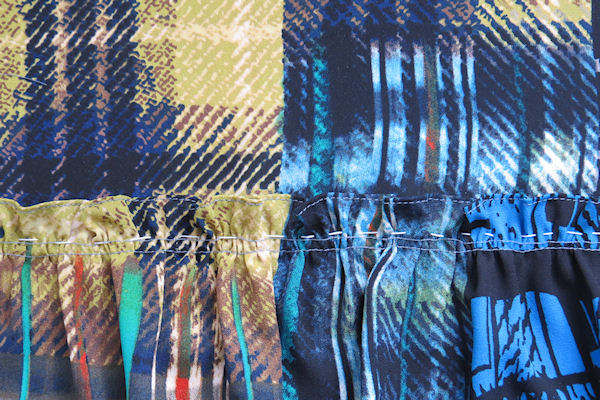
Baste the gathers by hand to hold in place.

Attach to the yoke with 2 rows of stitching.
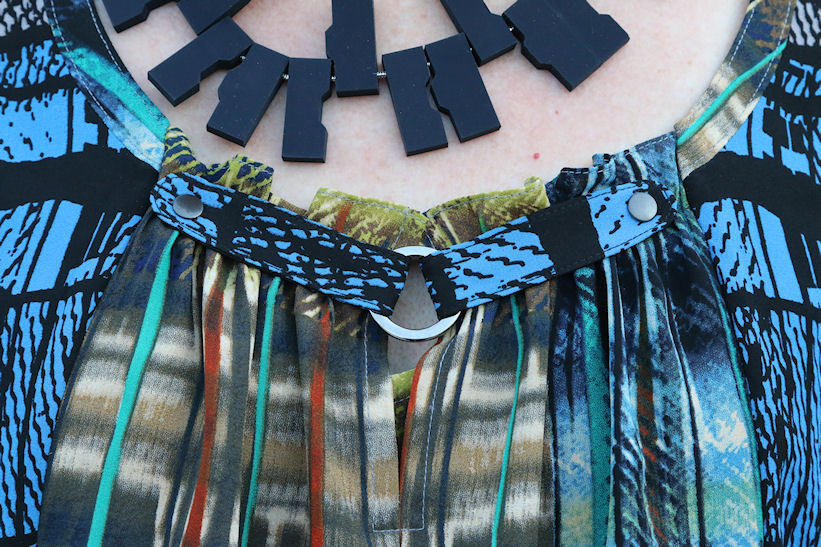
The front of the dress has a wide neckline, with a center front slit, tab and ring closure. I used a bias knit fusible interfacing for the neckbands. Although this interfacing might appear to be too heavy for the light, drapey polyester fabric, the neckbands need to be quite stable in order to support the dress.

I often use templates when working with small fiddly pieces. Templates give a more accurate stitching line than the seam allowance guides found on your sewing machine. To make the front tabs I cut a template out of heavy brown paper. The template does not have any seam allowances.
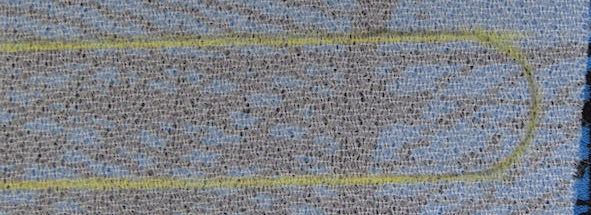
Lay the template onto an interfaced piece of fabric. Chalk around the template and then use this chalk line as a stitching line.
Use a short stitch length of 2mm to smoothly stitch around the curves.
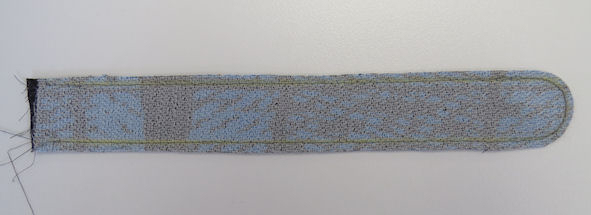
Carefully trim close to the stitching. By trimming the seam allowance down to 1/8" you should be able to turn the piece through and press it to obtain a nice smooth curve.
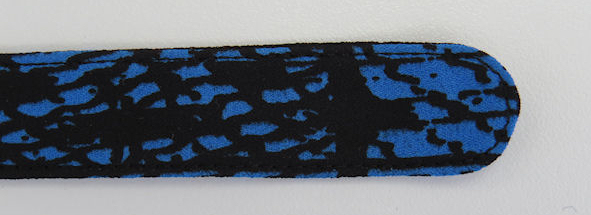
Finish the tabs with edge stitching.
Narrow rouleaux ties or straps in this case can be tricky to make. Test the technique on a sample first. Fold the fabric in half right sides together. Baste to hold. Stitch close to the folded edge. The seam allowance will be much wider than the folded edge. Stitch out a few samples with different widths of seam allowance. The trick is to stitch as close to the fold as you can, while still being able to turn it through and have the seam allowances fill the fold.
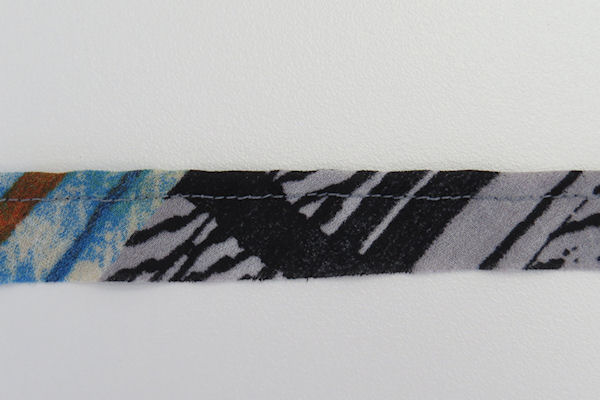
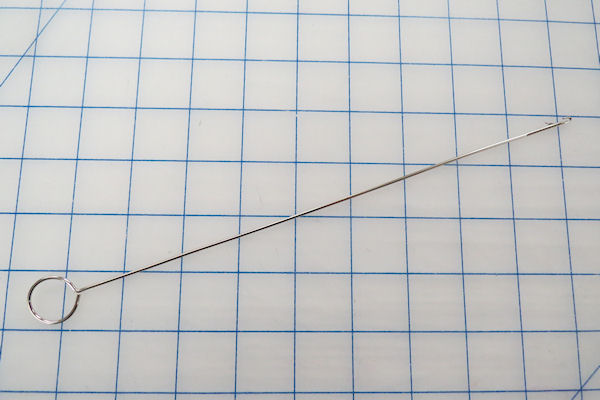
Use a loop turner to feed through the folded edge, grab a bit of fabric and then pull through.
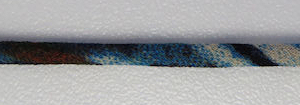
When the straps are complete, pin the ends to the ironing board. Steam the straps lightly. The iron should not touch the fabric; otherwise you will flatten the nice rolled appearance.
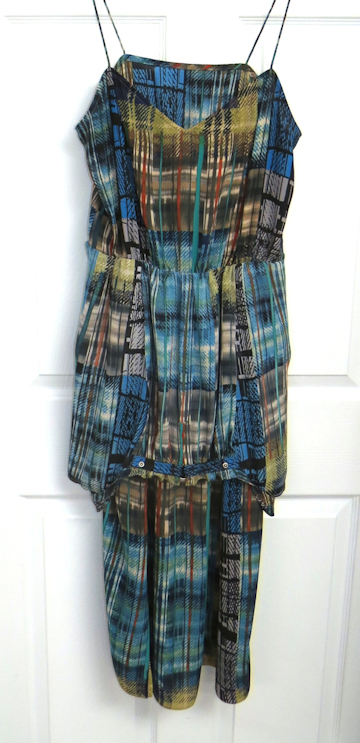
Bodice hanging down to show the
attached slip underneath
The camisole is permanently sewn to the waist seam of the dress. With the entire dress being finished with French seams and narrow machine stitched hems, it is very machine washable. Polyester tends to pick up static electricity but a spray with Static Guard certainly helps to reduce the shock. During construction, it was helpful to spray the partially assembled garment with Static Guard to prevent it from picking up stray threads in my very dry winter sewing studio. The fabric is perfect for travelling, and I love the finished product. It is a garment that I can pull out of the suitcase without so much as a wrinkle!

